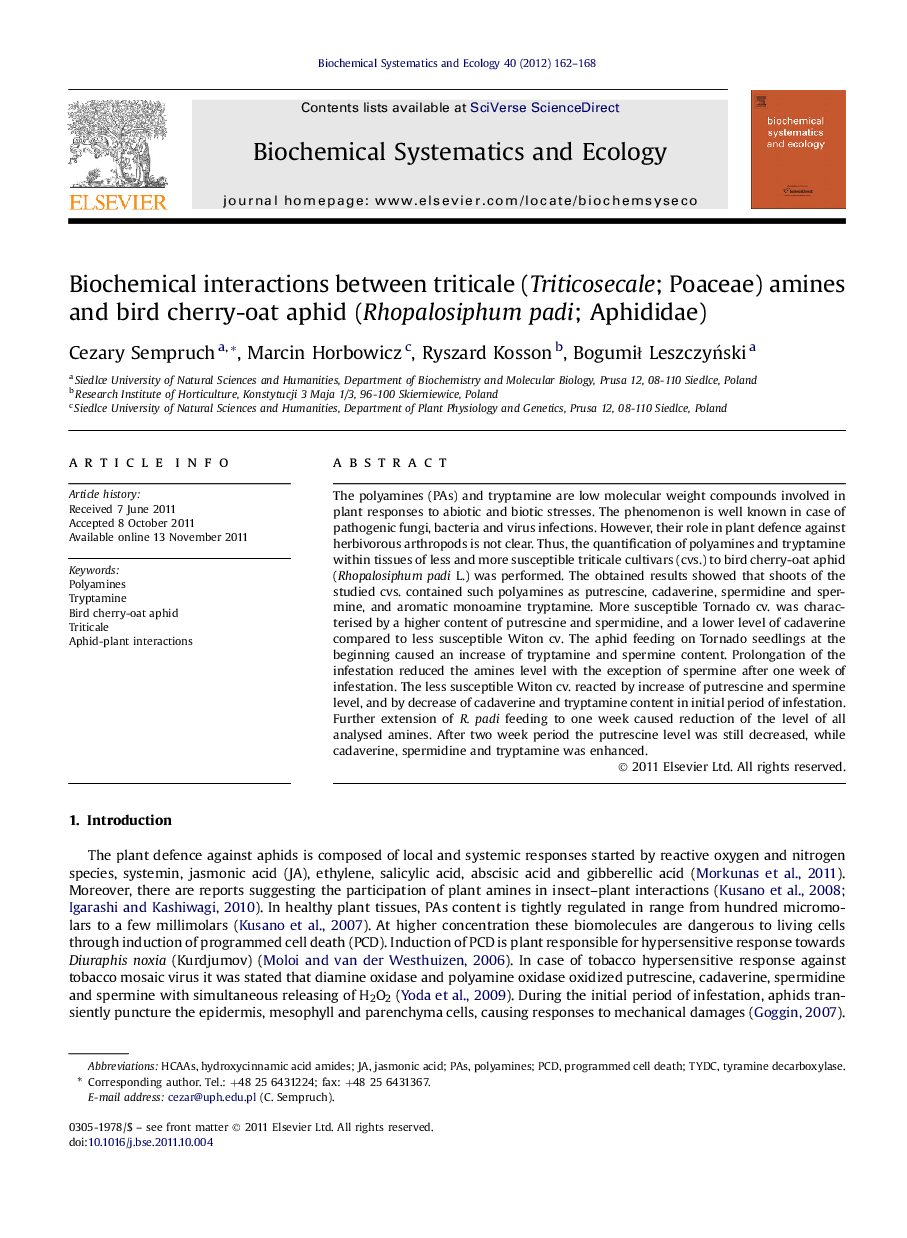| Article ID | Journal | Published Year | Pages | File Type |
|---|---|---|---|---|
| 1351861 | Biochemical Systematics and Ecology | 2012 | 7 Pages |
The polyamines (PAs) and tryptamine are low molecular weight compounds involved in plant responses to abiotic and biotic stresses. The phenomenon is well known in case of pathogenic fungi, bacteria and virus infections. However, their role in plant defence against herbivorous arthropods is not clear. Thus, the quantification of polyamines and tryptamine within tissues of less and more susceptible triticale cultivars (cvs.) to bird cherry-oat aphid (Rhopalosiphum padi L.) was performed. The obtained results showed that shoots of the studied cvs. contained such polyamines as putrescine, cadaverine, spermidine and spermine, and aromatic monoamine tryptamine. More susceptible Tornado cv. was characterised by a higher content of putrescine and spermidine, and a lower level of cadaverine compared to less susceptible Witon cv. The aphid feeding on Tornado seedlings at the beginning caused an increase of tryptamine and spermine content. Prolongation of the infestation reduced the amines level with the exception of spermine after one week of infestation. The less susceptible Witon cv. reacted by increase of putrescine and spermine level, and by decrease of cadaverine and tryptamine content in initial period of infestation. Further extension of R. padi feeding to one week caused reduction of the level of all analysed amines. After two week period the putrescine level was still decreased, while cadaverine, spermidine and tryptamine was enhanced.
Graphical abstractFigure optionsDownload full-size imageDownload as PowerPoint slideHighlights► Amine level in triticale cvs. infested by Rhopalosiphum padi was quantified. ► Putrescine, spermidine, tryptamine negative influenced on aphid density at flowering. ► Cadaverine and spermine negatively correlated with aphid density at milk ripe. ► Amines content various changed in triticale cvs. in response to R. padi infestation. ► The changes were dependent on duration of infestation and aphid number.
